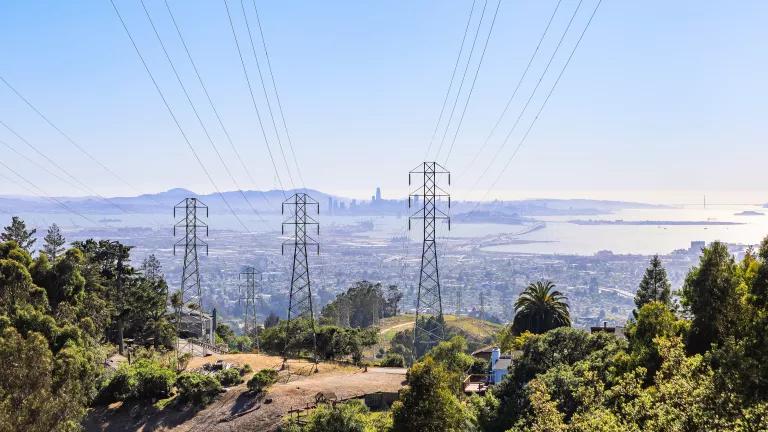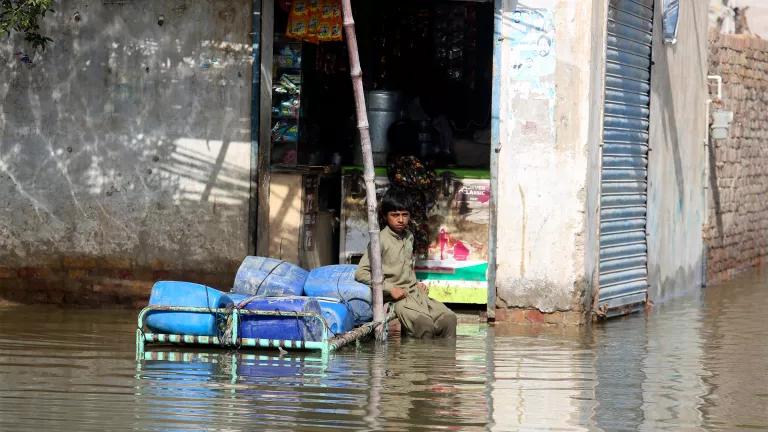FERC’s Winter Outlook Shows Need for an Updated Grid
FERC's Winter Assessment shows that we need an updated and upgraded electricity system to ensure it’s reliable in extreme weather. Given the challenges forecast for coal and gas, it's clear a cleaner, broader system will make the grid more nimble and resilient for the future.

Brett Sayles via Pexels
In its much-anticipated winter assessment, the Federal Energy Regulatory Commission (FERC) forecasts that U.S. electricity markets should have ample supplies to heat and power consumers through the coming winter…unless.
Unless, for example, certain regions of the country get unlucky during prolonged frigid temperatures. Or unless freezing temperatures or supply constraints limit coal deliveries to regions that rely on the fuel for prolonged periods. Or unless pipeline constraints and high prices conspire to limit the availability of gas in New England.
For the short-term, that means grid operators need to prepare now to take action to keep heaters and lights on this winter. For the future, however, this means we need to get to work. We need an updated and upgraded electricity system to ensure it’s reliable for the increasingly extreme weather from climate change. Given the challenges forecast for coal and gas this winter, it’s clear we cannot go back to the dirty old days.
It becomes clearer every day that no energy source is perfect, but adding more transmission lines, efficiency measures, renewable energy, demand response, and energy storage can deliver a system that is most able to withstand the coldest colds and hottest heat waves.
A mild winter?
FERC released its Winter Energy Market and Reliability Assessment on Thursday, just after the National Oceanic and Atmospheric Administration (NOAA) forecast above-average winter temperatures for most of the United States. On its face, the NOAA forecast was welcome news, but nothing is guaranteed.
“Extreme weather can occur quite frequently and all over the place and in different forms, and obviously, extreme weather can wreak havoc in a whole bunch of ways,” FERC Chairman Richard Glick said at the meeting. “We need to remain continuously vigilant.”
In all, the report confirms what became abundantly clear during Winter Storm Uri in Texas in 2021: While utility executives and grid operators refer to coal and gas as “dispatchable,” they come with their own risks and reliability concerns.
Nowhere is that truer than in New England, a region that relies heavily on natural gas for heating and electricity and often experiences market stresses during periods of prolonged cold. Disruptions in the global market for liquefied natural gas (LNG) following Russia’s invasion of Ukraine have raised prices and demand for LNG, a factor that could weaken the region’s position in the event of a cold snap.
“It’s just crazy to be so reliant on LNG imports,” Glick said. “It’s just not sustainable.”
In its own winter assessment, grid operator ISO New England (ISO-NE) said that under mild-to-moderate winter conditions, the region’s power grid is expected to hold up without service interruptions. Under more extreme winter conditions, such as sustained cold coupled with an outage at a large power plant or LNG terminal, rolling blackouts are possible.

Brett Sayles via Pexels
New England’s over-reliance on gas threatens the safety and economic prospects of the region. As a report from the Sustainable FERC Project coalition and member groups explains, to solve this problem, the region needs to get off the gas carousel and invest in the clean energy solutions that will lower costs, diversify the grid, and reduce dependence on the fossil fuels that are driving climate instability. In particular, New England continues to lag behind other regions on development of demand response, a low-cost resource that can be quickly deployed to help meet winter needs.
Coal’s risks
Coal may be especially problematic this winter. Supplies to coal-fired generators may be affected by mine closures, transportation limitations, and labor challenges. An extended coal shortage for power generation could impact regions that rely on coal-fired generation, which is pretty much everywhere outside of the Northeast and California.
In Texas, ERCOT (Electric Reliability Council of Texas), which remains under a microscope following the damage wrought by Uri, is expected to add about 12 gigawatts (GW) of generation (9 GW of solar and wind and 1.9 GW of battery storage) and to retire about 500 megawatts (MW) of natural gas generation. Even with those additions, available generation could fall 19.7 GW short of demand during extreme winter conditions, FERC said.
ERCOT and other grid operators across the country have taken steps to implement FERC and NERC (North American Electric Reliability Corporation) recommendations for winter preparedness following Uri, and all regions are expected to have more capacity this winter than in the prior year. Moreover, several grid operators have made changes to demand response programs that could help with reliability this winter by reducing demand when needed, according to FERC.
FERC’s report confirms what the Sustainable FERC Project has long maintained: No one fuel source is perfect. Each comes with its vulnerabilities to weather, markets, and other factors. While some would have us go backward and rely all the more on dirty fossil fuels, the real way to ensure that the heat and power will stay on is to build a nimbler and more resilient system that is more efficient, can draw energy from around the country because of an improved transmission system, and has more storage and demand response.
In other words, a cleaner grid will be a more resilient grid. Let’s get to work and build it now.



